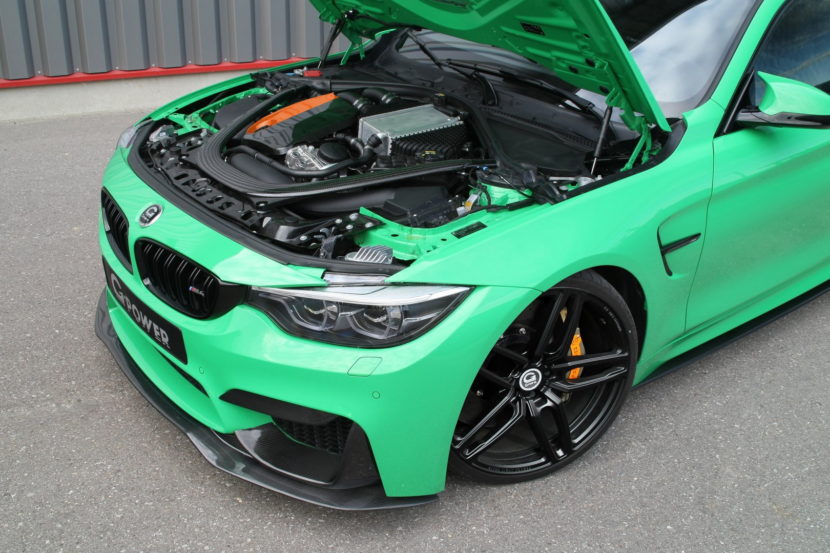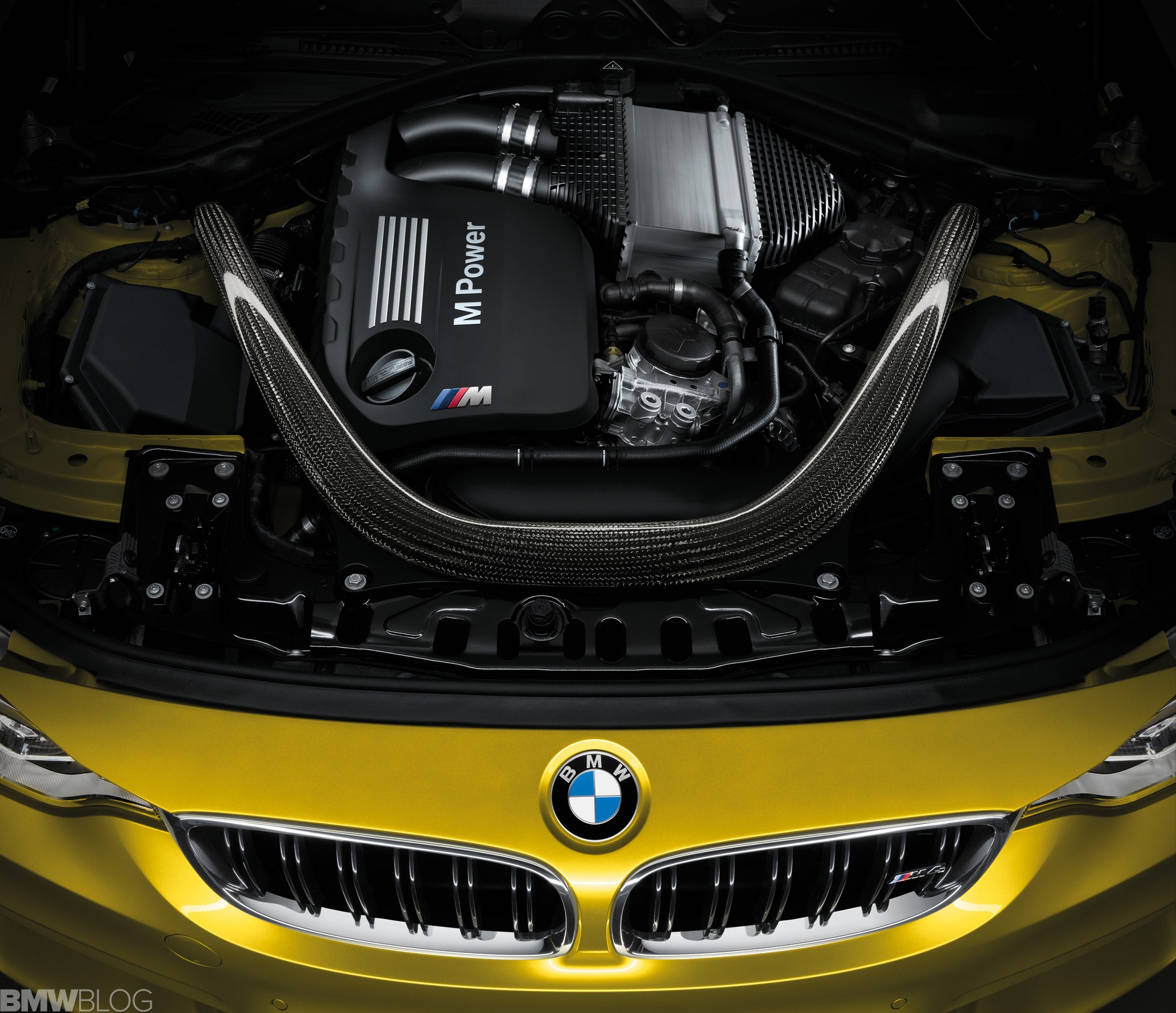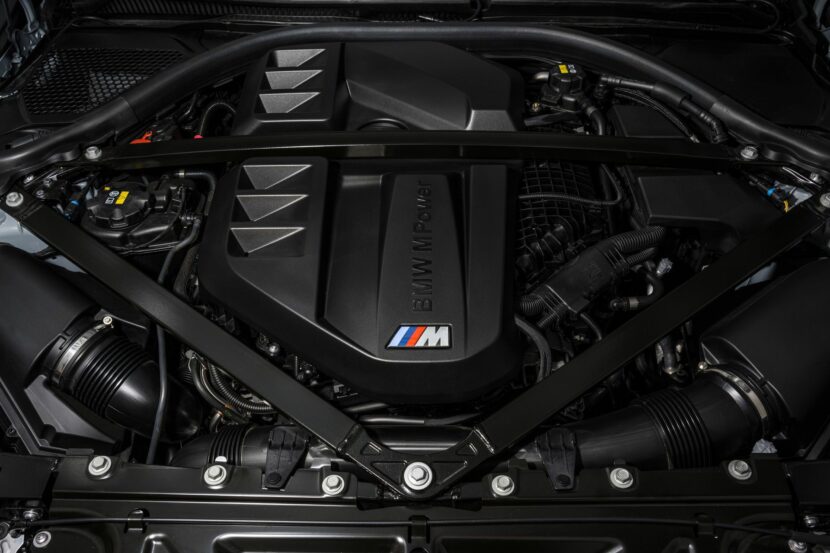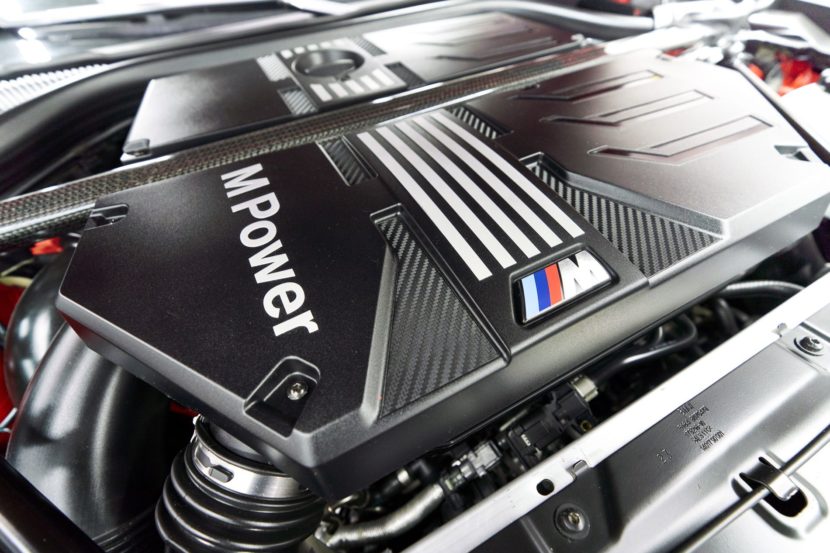The BMW S55 engine had a short life, but it left a long lasting impression on the M owners community. The BMW S55 engine is actually the performance version of the popular N55 engine, which debuted in 2009 as the first mass-produced engine to feature a twin-scroll turbocharger. It’s also the precursor of the BMW S58 which is used today in a variety of different BMW models. The S55 was introduced in 2013 for the F80 M3 and F82 M4 models, and later used in the F87 M2 Competition and M2 CS variant.
Specs
The S55 is a 3.0 liter inline-6 engine that uses two mono-scroll turbochargers, one for each bank of three cylinders. The engine also features a closed-deck crankcase design, a twin-wire arc-sprayed coating on the cylinder bores, Grafal-coated aluminum alloy pistons, and Valvetronic variable valve lift technology. The S55 has a bore of 84 mm, a stroke of 89.6 mm, and a compression ratio of 10.2:1.
The engine comes with different power outputs, based on specific models and variants:
- Makes 275 hp in the F87 M2 CS Racing
- 404 hp in the F87 M2 Competition
- 425 hp in the 2014–2018 F80 M3
- 425 hp in the 2014–2020 F82/F83 M4 Coupe and Convertible
- 444 hp in the 2016–2018 F80 M3 with Competition package
- 444 hp in the 2016–2020 F82/F83 M4 with Competition package
- 444 hp in the 2020–2021 F87 M2 CS
- 453 hp in the 2018 F80 M3 CS
- 453 hp in the 2017–2020 F82 M4 CS
- 493 hp in the 2015–2016 F82 M4 GTS
- 493 hp in 2017 F82 M4 DTM Champion Edition
Reliability
The S55 engine is generally considered to be a reliable engine, but it is important to note that it is a high-performance engine and requires regular maintenance. The S55 engine is praised for its power output, responsiveness, and sound, but it also has some common problems that affect its reliability and performance.
Some common problems that have been reported with the S55 engine include:
– Crank hub failure: This is a rare but serious issue that can cause the engine to lose timing and damage the valves and pistons. The crank hub is a component that connects the crankshaft to the timing chain and sprocket. Due to the high torque and stress of the S55 engine, especially when modified, the crank hub can slip or spin on the crankshaft, causing the timing to go out of sync. This can result in catastrophic engine failure and expensive repairs. The solution is to install an aftermarket keyed or pinned crank hub that prevents slippage.
– Carbon buildup: This is a common issue for direct injection engines like the S55, where fuel is sprayed directly into the combustion chamber instead of the intake manifold. This reduces fuel consumption and emissions, but also causes carbon deposits to form on the intake valves over time. These deposits can reduce airflow, performance, and fuel efficiency, and cause rough idle, misfires, and cold start issues. The solution is to perform regular intake valve cleaning using walnut blasting or chemical methods.
– Oil leaks: This is another common issue for BMW engines in general, where various gaskets and seals can deteriorate over time and cause oil to leak from different parts of the engine. Some of the most common sources of oil leaks on the S55 are the valve cover gasket, the oil pan gasket, and the oil filter housing gasket. These leaks can cause oil consumption, low oil pressure, and damage to other components. The solution is to replace the faulty gaskets and seals with new ones.
Tuning Potential

The S55 engine has a lot of tuning potential. With simple modifications, such as a tune and downpipes, the S55 engine can produce over 500 horsepower. With more extensive modifications, such as upgraded turbos and a built engine, the S55 engine can produce over 700 horsepower. Of course, the latter is the more extreme use case and won’t likely be reliable long term.
Here are some simple modifications and tuning methods we’ve observed over the years, but also keep in mind that not all of these modifications are street legal and most, if not all of them, could void your factory warranty:
– ECU tuning: This is the most basic and essential mod for any turbocharged engine, as it allows for adjusting various parameters such as boost pressure, fuel injection, ignition timing, and throttle response. ECU tuning can unlock more power from the stock turbos or support bigger turbos for even more power. There are different options for ECU tuning such as piggyback devices (e.g., JB4), flash tunes (e.g., MHD), or custom tunes (e.g., BM3).
– Intake: This is a mod that improves airflow into the engine by replacing the restrictive stock airbox with a less restrictive one or an open cone filter. Intake mods can also enhance the sound of the turbo spooling and provide a slight increase in power and throttle response.
– Catless downpipes: This is a mod that removes or replaces the catalytic converters on the exhaust system with straight pipes or high-flow cats. Catless downpipes reduce backpressure and increase exhaust flow, resulting in more power, torque, boost response, and sound. However, they also increase emissions and may trigger check engine lights or fail emissions tests.
– Upgraded top mount intercooler: This is a mod that replaces the stock intercooler with a larger and more efficient one that sits on top of the engine. An upgraded intercooler can reduce intake air temperatures and prevent heat soak, which can rob power from the engine. A cooler intake charge also allows for more aggressive tuning and higher boost levels.
– E85 fueling: This is a mod that involves running ethanol-based fuel (E85) instead of gasoline in the engine. E85 has a higher octane rating and lower energy density than gasoline, which means it can resist detonation better and allow for more ignition timing advance and boost pressure. E85 also has a cooling effect on the intake charge due to its high latent heat of vaporization. However, E85 also requires more fuel volume to achieve stoichiometric combustion, which means it may require upgraded fuel pumps and injectors to support higher power levels.
Final Tips
Overall, the BMW S55 engine is a high-performance and reliable engine with a lot of tuning potential. It is a popular choice for BMW enthusiasts and tuners alike.
Here are some additional things to keep in mind about the BMW S55 engine:
- It is important to use high-quality oil and fuel in the S55 engine to maintain its reliability.
- The S55 engine is equipped with a direct injection system, which can lead to carbon buildup on the intake valves. It is important to have the intake valves cleaned regularly to prevent this buildup from causing problems.
- The S55 engine can also be equipped with a water injection system as seen in the BMW M4 GTS, which helps to keep the engine cool and reduce emissions. It is important to keep the water injection system filled with distilled water to ensure that it is working properly.
If you are considering buying a car with a BMW S55 engine, be sure to have it inspected by a qualified mechanic before you buy it. This will help to identify any potential problems with the engine.








































































